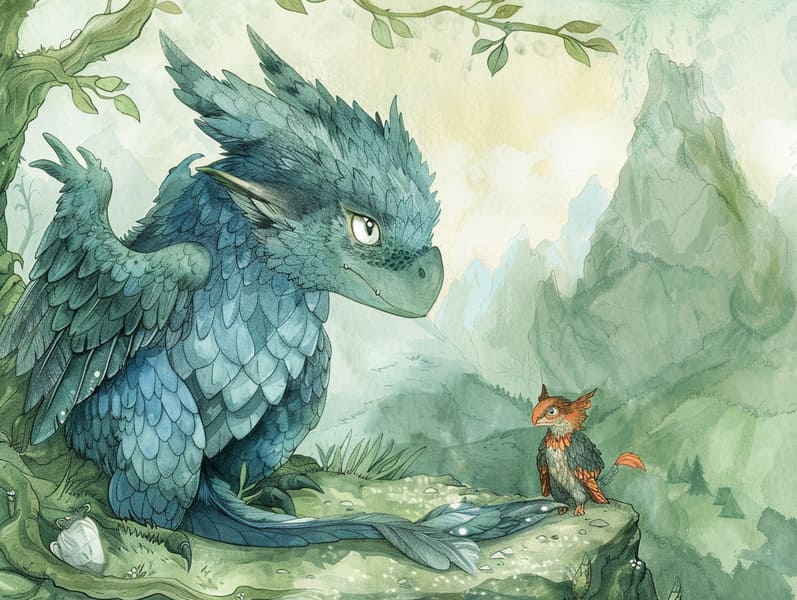The Evolution of Online Fairy Tales and the Undying Grace.
The Evolution of Online Fairy Tales and the Undying Grace.
Blog Article

Popular fairy tales have old origins. These tales have been transmitted from one generation to the next well before they were ever put on paper. They sprang from a variety of backgrounds, including Asian traditions. They were initially transmitted among older generations, often carrying themes and messages reflective of the societal norms and beliefs of the time.
Jacob and Wilhelm Grimm, the two Grimm brothers, were among the first to collect and release many of these beloved fairy tales. Their compilation, "Grimm's Fables," included stories like "The Story of Cinderella," "The Bread Crumb Trail," and "Little Snow White," which have since become hallmarks in the world of children's fairy tales. Similarly, Andersen's delightful narratives, such as "The Story of the Little Mermaid," and "The Duckling that Could," have enchanted hearts worldwide, ensuring their place in the pantheon of famous fairy tales.
Despite their age, traditional fairy tales remain as significant as ever, especially as kids' bedtime tales. These charming stories are now available in different formats, including artistically illustrated books, delightful animations, and web-based fairy tales.
Their enduring popularity can be connected to several charming aspects:
Life Lessons: Traditional fairy tales often offer important moral lessons. Narratives like "The Tale of the Boy Who Cried Wolf" teach the virtue of being truthful, while "The Tortoise and the Hare" demonstrate the virtues of persistence and unpretentiousness. These stories offer young ones clear distinctions between truth and falsehood, guiding their moral compass in a soft yet lasting way.
Empathy and Awareness: Fairy tales frequently involve individuals facing trials and tribulations, urging listeners to sympathize with their struggles and support their triumphs. For instance, "Beauty and Her Beast" shows us the virtue of looking beyond appearances to realize the inner spirit of a being, strengthening perception and awareness.
Cultural Insights: Many classic fairy tales are interwoven with the cultural contexts from which they were born. Reading these stories can provide enlightening views into different beliefs, building a sense of cultural understanding and recognition.
Imagination and Creativity: The fantasy-filled elements in classic fairy tales—magical kingdoms—stimulate children’s visions and dreams. These fairy tales transport readers to otherworldly realms, inspiring imaginative ideas and a sense of magic that persists a lifetime.
Ancient fairy tales are not only magical but also edifying. They act as alluring tools in developing various thinking and feeling skills in young ones. When traditional fairy tales are read aloud, they boost language development by teaching new language and complicated sentence structures. This practice also cultivates hearing abilities and mindfulness, as young readers listen intently, looking forward to see what happens next.
Furthermore, examining the themes and characters of fairy tales can develop logical thinking and logical thinking. The young are led to discover patterns, guess what will happen, and figure out cause and effect. These examinations also encourage the young voice their thoughts and feelings, advancing their emotional intelligence.
In today’s online age, the existence of online fairy tales has made these tales more available than ever. Digital sites and applications share large libraries of children's fairy tales that can be browsed or played anytime, anywhere. Fairy tales told out loud are particularly popular, giving an fun way for young readers to relish these charming stories. Narrated books and read-to-me stories transport characters and settings to life, often paired with charming sound effects and soundtracks that augment the tale journey.
The timeless charm of ancient fairy tales lies in their ability to modify to changing times while keeping hold of their basic principles. Contemporary modernizations of these stories often present more varied characters and modern settings, making them familiar to today’s audience. However, the main ideas of fortitude, sympathy, and righteousness remain unchanged, continuing to impact kids of all ages.
Fairy tales also offer a sense of comfort and comprehensibility. They render a coherent narrative with a definite beginning, middle, and end, often finishing with the resolution of conflicts and the triumph of virtue over vice. This certainty can be encouraging for little ones, giving a sense of dependability in an unpredictable world.
Old fairy tales continue to bewitch and instruct new generations, maintaining their charm and impact in modern society. As children's bedtime stories, they distribute a perfect blend of fascination and comprehension, nourishing moral values, empathy, and creativity. The proliferation of digital storybooks and the favor of fairy tales recited validate that these timeless fairy tales remain available to new generations.
By holding onto and distributing these fairy tales, we continue to admire the rich tapestry of myths and cultural heritage. Whether you are viewing a vividly illustrated book, experiencing a electronic collection, or listening through an spoken story, the splendor of bedtime fairy tales is always within reach. These narratives show us of the eternal ability of storytelling and its ability to link us across time and space.
No matter if you are exploring a richly illustrated book, browsing a online library, or listening through an spoken story, the loveliness of children's fairy tales is always within reach.
These stories reveal of the lasting effect of narratives more info and its ability to link us across time and space, casting a charm that enchants and educates alike.